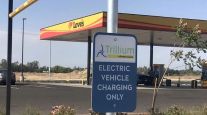Senior Reporter
FHWA Extends Comment Period on State Performance Measurement Requirement to Nov. 15
Federal Highway Administration officials have extended the public comment period on a proposal that includes a provision that would drop an Obama administration requirement that state departments of transportation measure the percentage of change in tailpipe carbon dioxide from a base of 2017 levels.
FHWA said it is extending the comment period to Nov. 15 from Nov. 6.
The proposed rule also would require states to assess the performance of the national highway system and freight movement on the interstate system.

The agency said the comment extension is “mindful of requests” by Air Carolina, Natural Resources Defense Council, Southern Environmental Law Center, U.S. Public Interest Research Group, City of New York Law Department and the state transportation departments of Michigan, Idaho, Montana, North Dakota, South Dakota, Wyoming and Missouri.
The Oct. 5 notice of proposed rulemaking follows a series of related rules that established a set of performance measures for state DOTs and metropolitan planning organizations to use as required by the MAP-21 transportation law and FAST Act.
“In the last of that series of rules, published on Jan. 18, 2017, FHWA established a measure on the percent change in carbon dioxide emissions from the reference year 2017, generated by on-road mobile sources on the national highway system,” FHWA said. “Through this NPRM, FHWA proposes to repeal the greenhouse gas measure.”
As part of the mandate, FHWA established a set of 12 areas of performance measures for state DOTs and MPOs to use to assess performance.
They included: serious injuries per vehicle mile traveled; fatalities per VMT; number of serious injuries; number of fatalities; pavement condition on the interstate system; pavement condition on the non-interstate national highway system; bridge condition on the highway system; performance of the interstate system; performance of the non-interstate highway system; freight movement on the interstate system; traffic congestion; and the area slated for repeal by the Trump administration — on-road mobile source emissions.




